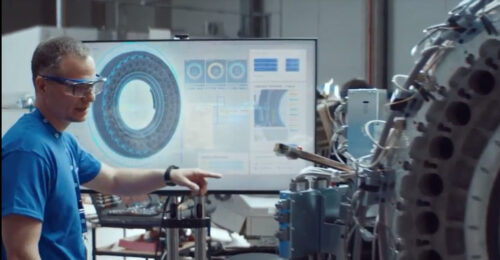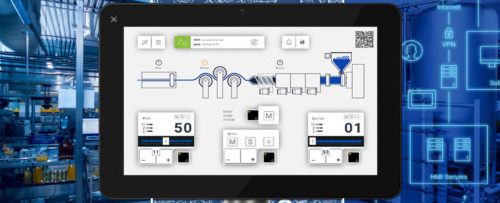Making Lean results visible at Industries for the Blind
Lean training and implementation involves a lot of visual techniques to bring about process improvements. However, Industries for the Blind (IFB) in Asheville, NC, a small, non-profit manufacturer, has realized a number of benefits from it. Thanks to Lean, IFB Asheville has saved more than $337,000 in operating costs over the past year, and that amount is expected to increase.
Lean training and implementation involves a lot of visual techniques to bring about process improvements. However, Industries for the Blind (IFB) in Asheville, NC, a small, non-profit manufacturer, has realized a number of benefits from it. Thanks to Lean, IFB Asheville has saved more than $337,000 in operating costs over the past year, and that amount is expected to increase.
A grant under the state of North Carolina’s Incumbent Workforce Development Program has enabled IFB Asheville to receive Lean training and implementation assistance from the Industrial Extension Service of North Carolina State University, an affiliate of the NIST Manufacturing Extension Partnership, as a way to become more competitive.
IES partners with the state to assist small and medium-sized manufacturers to improve productivity and increase profitability. “In late 2004, Bill Payne with the North Carolina Department of Commerce made the initial contact with IFB and then referred IFB to me,” said Chris McGraw, a manufacturing specialist with IES. “With a background in manufacturing, Bill knows how we can help with process improvement. In fact, he carries my business card around with him.”
IFB Asheville is a satellite manufacturing facility of the Winston-Salem Industries of the Blind, an independently owned and operated affiliate of the National Industries of the Blind. IFB Asheville employs more than 70 people, and 40 of them are blind. “Over 80% of our blind employees had never had a job before coming to work at IFB,” said director of manufacturing Randy Buckner, who manages the facilities at Asheville and Winston-Salem.
At its 45,000 square-foot facility, IFB Asheville manufactures a number of different items for the U.S. military, such as poncho liners for U.S. troops in Iraq, moisture-wicking t-shirts and a flyer’s kit bag. IFB Asheville also assembles and packages household impulse items sold in commissaries.
Under the federal Javits-Wagner-O’Day mandatory procurement program, the National Industries for the Blind receives priority consideration on bidding for government contracts, which mandates that 75% of the government contract work has to be done by legally or totally blind individuals. “The National Industries for the Blind is a key player in identifying government products where we can be competitive,” Buckner said. IFB also needs to demonstrate that it has the personnel, equipment and facilities to meet the production requirements.
IFB Asheville received 25 days of Lean training under the one-year state grant, which includes a budget for the work of IES. This follows 10 days of training that IES had provided over the previous year through its own technical assistance funding. “Lean training is necessary to keep us competitive,” Buckner states.
Customizing the program
IES has customized Lean training for IFB. Blind sewing machine operators use a lot of tactile guides in their work. “Lean techniques, such as 5S and Kaizen, rely so much on visuals,” said Suzannah Poteat, a Lean delivery specialist with IES, who has been working with IFB since spring. “How do you take something so visual and apply it in a way so that blind people can use it as well?”
The solution was to involve blind workers on every team. “We needed the blind perspective,” said McGraw. “We get people involved in their own areas, which is what Lean is about.”
Flexibility was built into the training schedule, which was broken down into one or two days at a time over a few months. According to Poteat, the goal was to maximize training without devastating production, which would apply for any small manufacturer. Care was also taken to accommodate any special health or scheduling needs of the blind workers.
As Buckner explains, the training in Lean manufacturing principles has gone through several stages. It focused first on process improvements for the largest demand areas: those that employ the most people and generate the most sales, such as poncho liners. To improve quality, the teams then looked at areas that showed the greatest number of defects. Another area of training has focused on reducing inventory throughout the plant.
Lean implementation can involve major changes in work routines. How receptive have sight-impaired people been to these changes? “Our employees have been very enthusiastic,” said Buckner. “Lean has made their jobs easier and they are able to produce more. Everything is more organized and less stressful.”
Driving efficiency, jobs
IES Lean specialists worked with IFB Asheville employees to apply Lean techniques on the factory floor, with impressive results. Some 2,000 square feet of floor space was freed up, which allowed IFB to bring in a new product line: moisture wicking t-shirts. This expansion resulted in the creation of 12 jobs and a significant increase in sales.
The IES specialists have helped the IFB employees determine a more efficient layout for the sewing lines, thereby improving quality by setting up systems to identify material versus sewing defects. “We’re holding tighter tolerances — plus-or-minus 1/4 inch — than commercial manufacturers and using blind people to produce those tolerances,” Buckner points out with pride.
He added that, with the implementation of a one-piece flow system for the poncho liners, the same amount of product can be produced in an eight-hour day instead of the pre-Lean 10-hour day. To streamline the operation, the sewing machines are lined up side-by-side so that one piece flows through the process from one operator to another. This also minimizes the amount of walking required.
As Poteat points out, the standardization of workstations and the workspace is having benefits for both sighted and blind workers. The Lean activities have created safer floor layouts, and better organization of workstations through 5S reduces time and energy spent looking for things.
“Lean makes sense to both sighted and blind people,” said McGraw. “Not only have we helped a manufacturer improve processes, we have also helped people who needed some extra help.”
The state workforce development grant runs through the spring of next year. And Buckner has plans. “We’re looking at ways to expand our facility and bring in more contracts,” he said.
| Author Information |
| Jim Daggerhart, PhD, is Director of the Manufacturing Extension Partnership at North Carolina State University’s Industrial Extension Service. He can be reached at (919) 515-5377 or by e-mail at Jim_Daggerhart@ncsu.edu . Information about IES can be found at its Website: mfg@nist.gov . |
Do you have experience and expertise with the topics mentioned in this content? You should consider contributing to our CFE Media editorial team and getting the recognition you and your company deserve. Click here to start this process.





